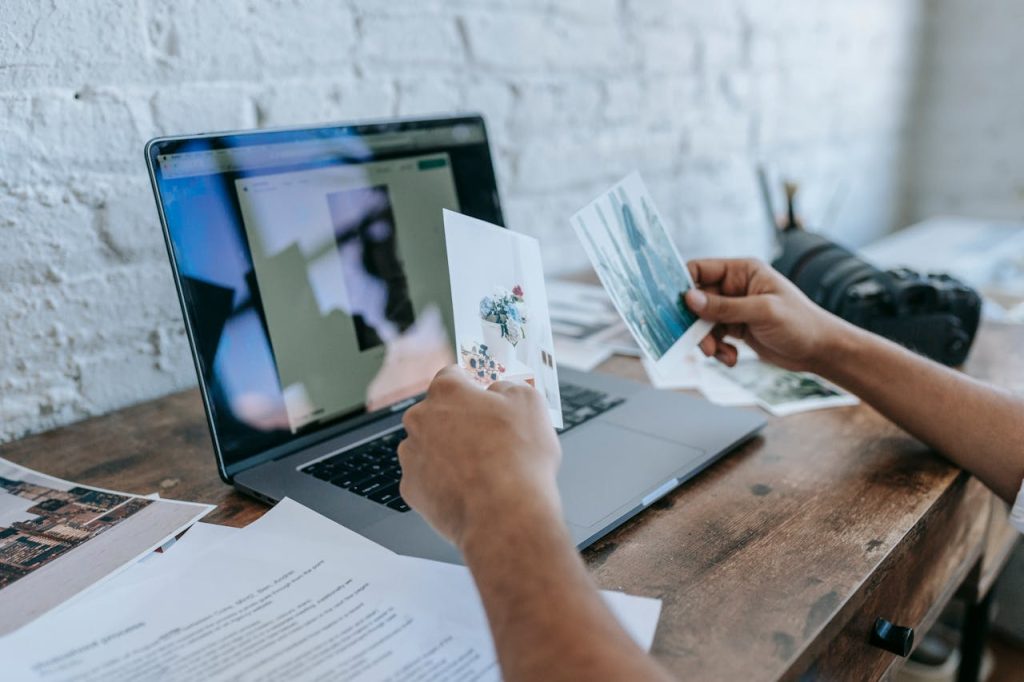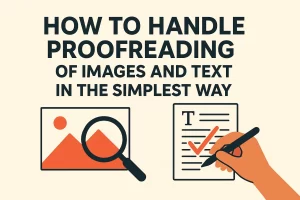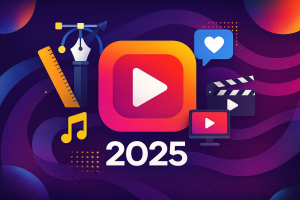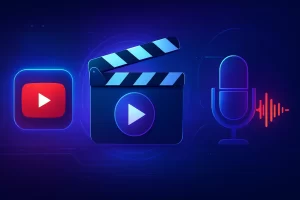From being a cool term to throw around in social circles to a technology every other firm has embraced, artificial intelligence (AI) has witnessed an awe-inspiring growth trajectory. Its adoption is not limited to IT and tech sectors but has also reached creative professions, including filmmaking, art, and design.
Unlike the artifice in its name, AI can actually whip up rich designs and artwork for businesses. As a result, many professionals now use these tools to produce templates quickly, aspiring for speed and efficiency.
But where should one draw the line when it comes to using AI for designing logos, a business’s face across online and offline media?
Translating Creative Ideas Into Instant Visuals
One of the biggest advantages of using AI tools for logo design is the quick translation of thought into tangible material. AI can produce visual representations from text in a matter of minutes. It strengthens harmony between human creativity and the tech-driven possibilities in a new world.
In fact, a Scientific Reports study found that what makes AI painting tools attractive to many users is their “attractiveness,” comprising ease of use,
efficiency, and sheer pleasure. There can be joy in witnessing your ideas brought to life so quickly.
Plus, this approach also enables logo designers to sample various representations without risking missing a deadline. Trying various combinations can increase the chances of creating a logo that fully captures the essence of the desired idea.
To Do: Use AI to test out various possible renditions of your core business logo idea.
Aligning With Business Branding and Goals
A logo must be on-point with branding guidelines, arguably more so than any other properties. This includes considerations of colors, fonts, symmetry, and spacing. It also covers the emotions it evokes in a viewer and the possible connotations.
Who can forget the reaction to Gap’s logo change back in 2010, when the clothing brand peculiarly decided to resign the iconic blue box? For years, it had symbolized the target demographic, brand image, and style all in one go. The reception to the new logo was so negative that the company hurriedly undid the changes.
AI can help businesses ensure that their artwork adheres to brand guidelines. These tools are adept at considering various factors for design, ensuring better compliance without limiting the potential for creativity.
Beyond logo design, AI tools for other branded properties, such as websites, have also grown in popularity. For example, AI-led website design and development can create professional portals that do justice to your business’s prerogatives.
According to Hocoos, a tailored website that reflects your brand’s identity can promote trust with your customers. Artificial intelligence can expedite the process, letting you launch your online presence faster and without the need for additional technical support.
To Do: Seek AI assistance to adhere to branding and customization guidelines for your company’s artwork.
AI Tools as Agents to Assist Human Ingenuity
Logo design can be a highly involved process. After all, the stakes are also high. In these circumstances, a tool can evoke contrary feelings: the assurance of a support system and the apprehension of trusting an external (impersonal) agent.
A common complaint among AI adversaries is that it does not do justice to creativity and poses ethical concerns, such as threatening jobs.
A 2025 study published in Frontiers in Artificial Intelligence links GenAI to “disembodied creativity”, proposing that we cannot fully articulate creative work through prompts. It also worries that these tools affect the feedback loop between the human mind and hand, which is important for creative and expressive material.
In light of these arguments, businesses can benefit from using AI tools as agents that complement human ingenuity. It is also a good idea to work with tools that offer more transparent explanations of how they function. It can provide users with a better understanding of the algorithms that render their prompts, leading to better outcomes.
To Do: Deploy AI tools for logo creation to support human creativity, with guardrails to maintain final decisions as human-led.
Employing AI tools for business artwork can translate into meaningful results, such as time savings and freeing up hours for other growth-focused endeavors. Since many businesses across different sectors have adopted these tools, one cannot afford to sit back and lose the opportunity for a competitive advantage.
That said, business owners should use AI with caution in creative pursuits, reimagining it as an aid and not a driver. Many of these tools are trained on limited datasets, which can restrict their possibilities to some extent. They may also lead to biased results—not immediately apparent but potentially disastrous for the brand.
At the risk of sounding risk-averse, human beings must still hold the reins in creative business endeavors. AI can be a brilliant support system for testing and experimenting with new ideas using far fewer resources than before.




